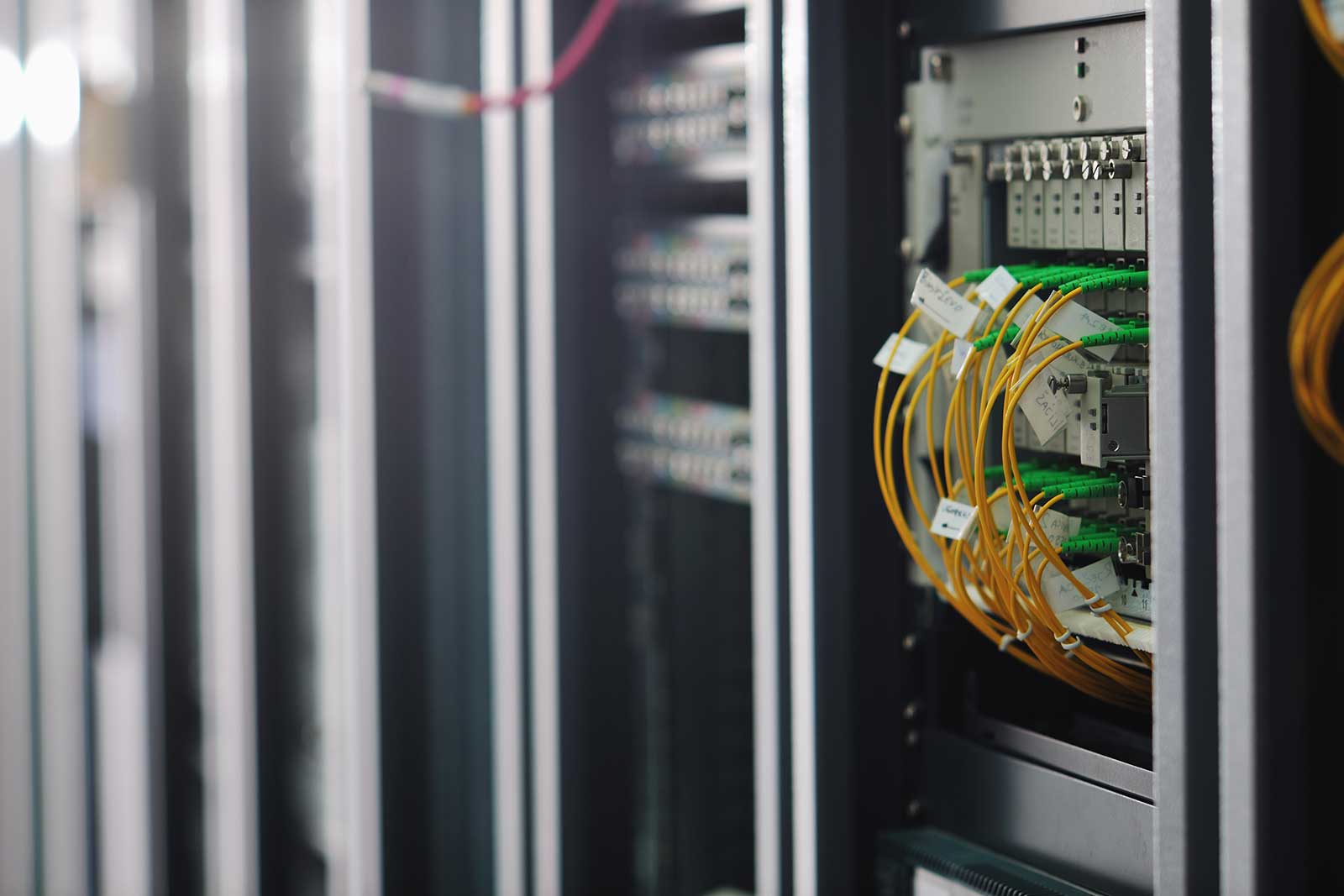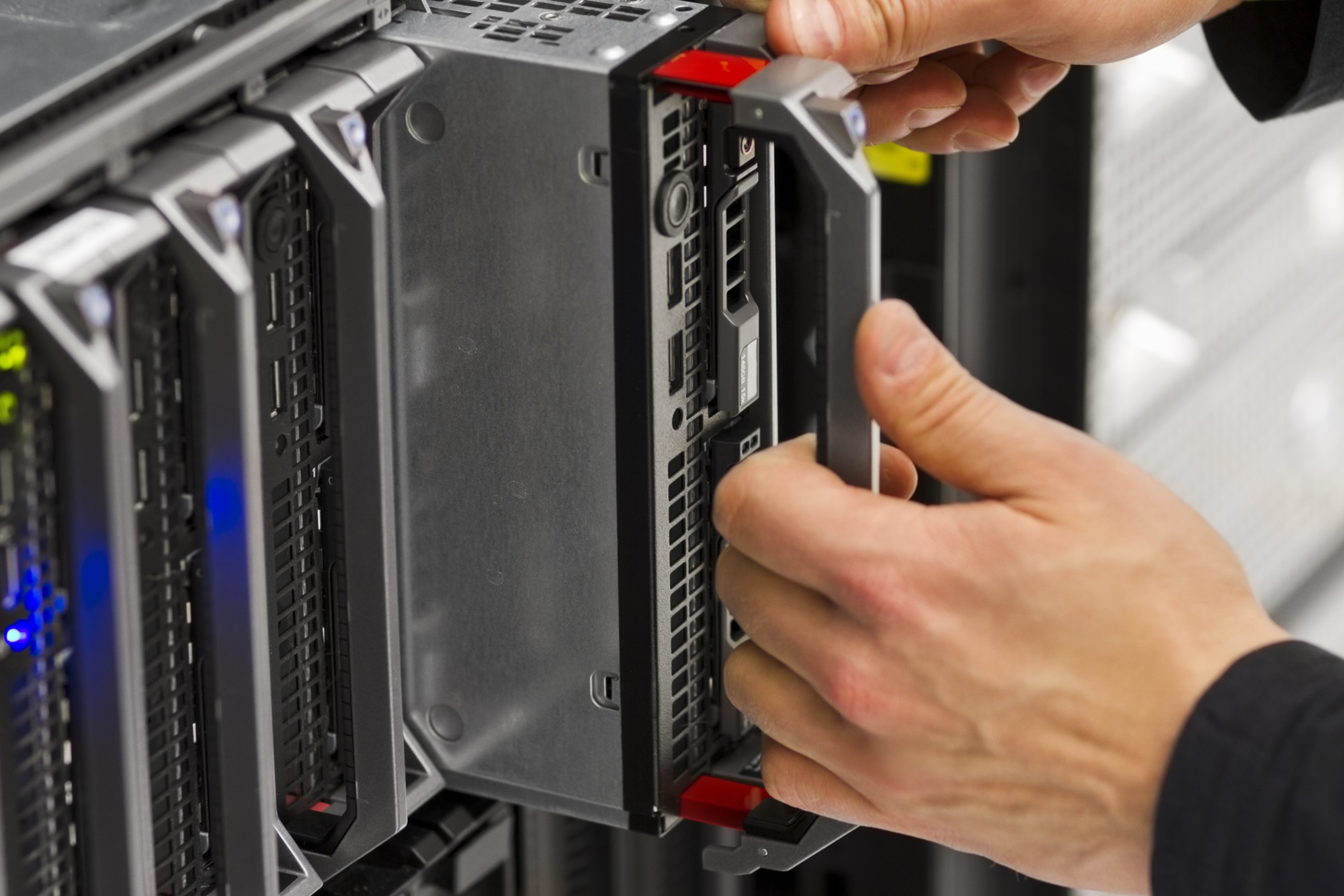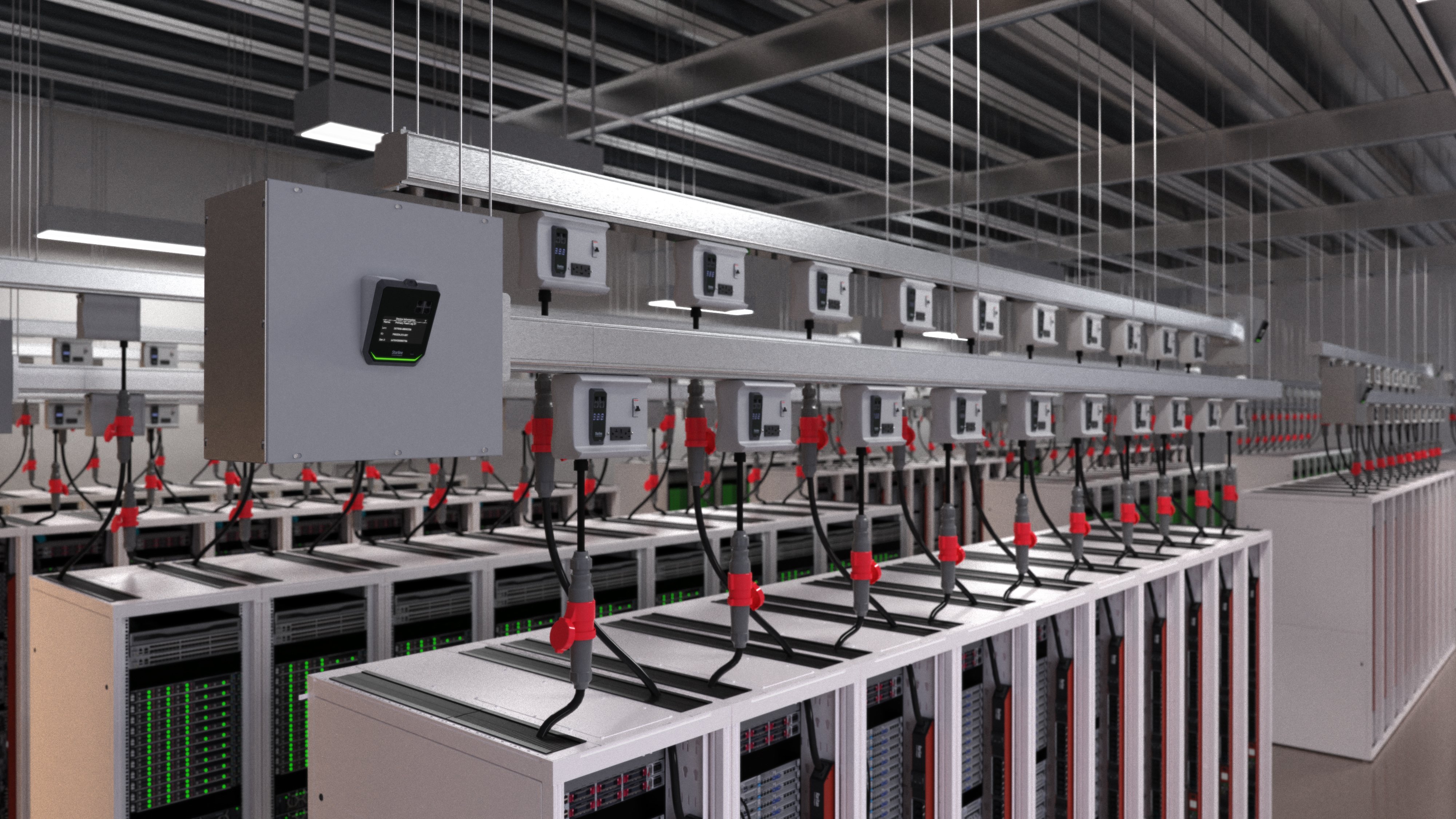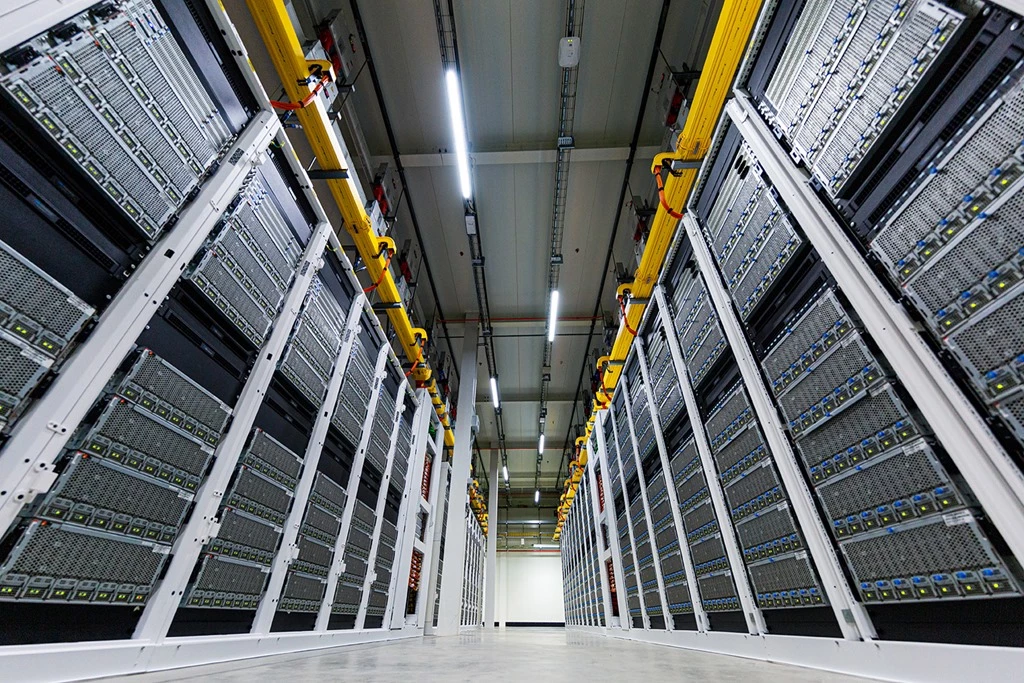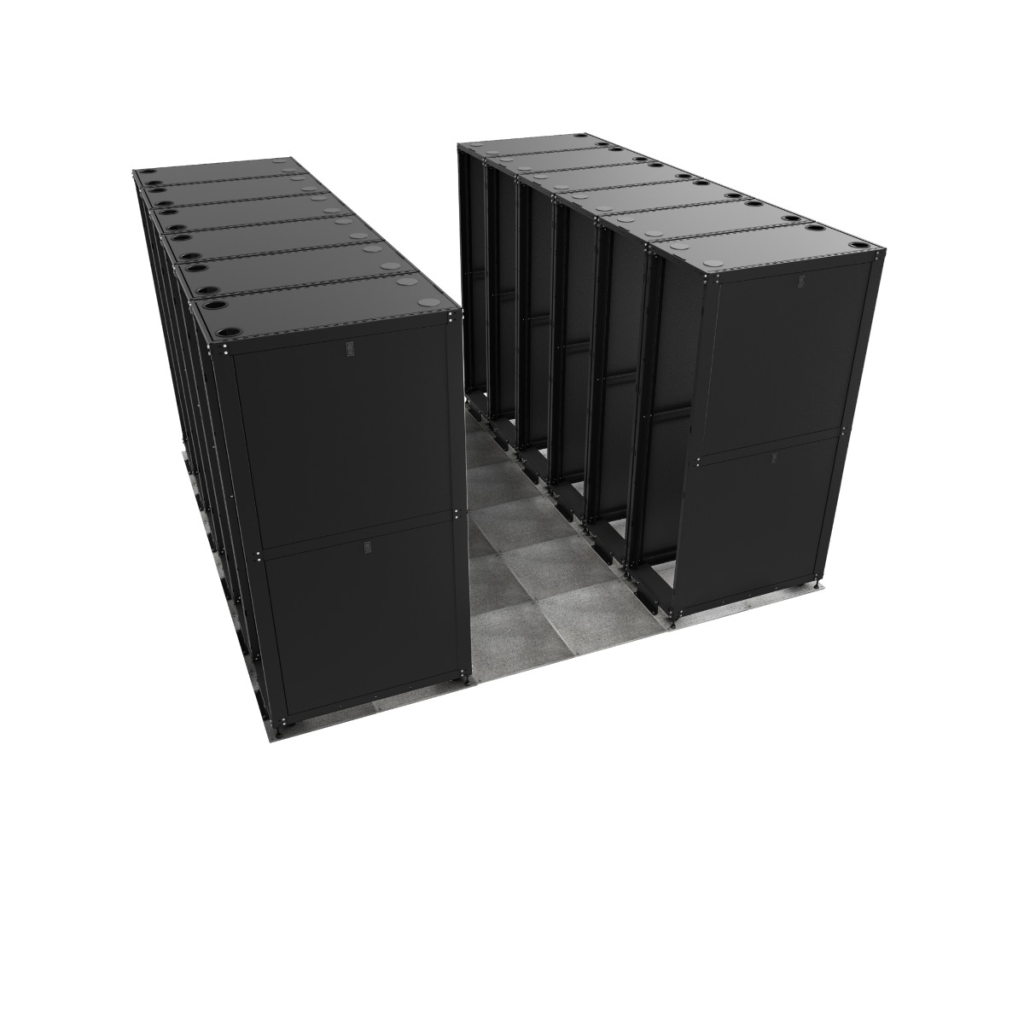Did you know that unplanned data center downtime costs businesses an average of $5,600 per minute? With the increasing reliance on digital infrastructure, managing IT systems efficiently has become critical for business continuity.
Stockholm Remote IT Data Center Services offer businesses a reliable solution to maintain secure and efficient operations. Services like data center support Stockholm, remote IT monitoring Sweden, and 24/7 IT assistance Stockholm ensure minimal downtime and quick resolution of technical issues.
The rising demand for on-demand IT services Stockholm highlights the need for flexible solutions that adapt to a company’s evolving IT requirements. These services not only help reduce operational costs but also provide access to skilled technicians around the clock.
Read this blog to explore how Stockholm’s remote IT data center services can transform your IT management strategy. For more information, check our data center solutions.
What Are Remote IT Data Center Services?
In a world where downtime can cost businesses thousands of dollars per minute, ensuring that your IT infrastructure is efficient and secure is essential. Stockholm Remote IT Data Center Services provide a comprehensive solution for managing and maintaining data centers, both on-site and remotely.
These services are designed to support businesses with critical tasks, ensuring their IT operations run smoothly.
Role in Efficient IT Operations
Managing a data center requires constant attention to ensure everything runs smoothly. Remote IT data center services take on critical tasks such as system checks, hardware replacements, and emergency troubleshooting.
These services provide businesses with the ability to maintain their IT environment efficiently without the expense of a full-time, on-site team.
Key Benefits
- Reduced Operational Costs: By outsourcing routine and emergency tasks, businesses save on the expenses associated with hiring and training in-house IT staff.
- Access to Skilled Technicians: Remote services ensure that highly qualified professionals are available when needed, whether it’s for hardware installations or resolving network issues.
- Improved System Reliability: Proactive monitoring identifies potential problems before they disrupt operations, minimizing downtime and keeping systems at peak performance.
These services offer flexibility, allowing businesses to scale their IT support as needed while ensuring critical systems remain operational and secure. For more insights, explore our data center services.
Key Services Offered
Effective management of IT operations requires reliable support for various tasks. Stockholm Remote IT Data Center Services provide businesses with essential services to ensure their data centers run efficiently and securely. Below are the key services offered:
Colocation Remote Hands Stockholm
For businesses using colocation, remote hands services offer crucial on-site support without the need for your in-house team to travel. These services handle:
- Hardware installations and replacements.
- System reboots and power cycling.
- Cabling and labeling for organized infrastructure.
By delegating these tasks to skilled technicians, businesses can reduce costs and improve operational efficiency.
System Monitoring and Maintenance
Proactive system monitoring is essential to detect potential issues early. With remote IT monitoring Sweden, technicians can:
- Identify performance bottlenecks before they lead to downtime.
- Conduct regular maintenance to ensure systems remain in optimal condition.
Routine monitoring and maintenance help prevent unexpected failures, saving businesses time and money.
Data Security in Stockholm Data Centers
Protecting sensitive data is a critical concern for modern businesses. Data security Stockholm data centers implement advanced measures to safeguard information, including:
- Encryption to protect data during transfer and storage.
- Multi-factor authentication for secure access.
- Compliance with regulations like GDPR to meet international standards.
These protocols help businesses protect their assets and maintain customer trust.
On-Demand IT Services Stockholm
- Emergency troubleshooting and incident resolution.
- Software updates and system patches.
- Inventory management and equipment audits.
With on-demand services, businesses can access the support they need when they need it, ensuring minimal disruption to their operations.
Explore how Reboot Monkey can assist your business with these critical services to optimize data center performance.
Why These Services Matter
According to a Uptime Institute study, 70% of data center outages are preventable with proper monitoring and maintenance. By leveraging remote IT data center services, businesses can minimize risks, save costs, and ensure their operations remain uninterrupted.
By leveraging Stockholm Remote IT Data Center Services, businesses can benefit from:
- Reduced Operational Costs: Outsourcing IT tasks eliminates the need for in-house teams and associated overheads.
- Enhanced Security: With data security Stockholm data centers, businesses can safeguard critical data against breaches.
- Improved Scalability: Easily adjust IT resources as business needs evolve.
Comparing In-House vs. Remote IT Support
| Aspect | In-House IT Support | Remote IT Data Center Services |
| Cost | High (salaries, training) | Lower (pay-as-you-go model) |
| Availability | Business hours only | 24/7 support available |
| Expertise | Limited to in-house skills | Access to specialized technicians |
| Scalability | Requires hiring new staff | Easily scalable services |
Key Components of Data Center Support Stockholm
Managing IT infrastructure effectively is crucial for maintaining business operations in today’s competitive environment. Stockholm Remote IT Data Center Services offer comprehensive solutions, ensuring that businesses can focus on growth while their IT systems remain robust and secure. Here, we delve into the core components of reliable data center support and their significance.
24/7 IT Assistance Stockholm
Round-the-clock IT support is essential for businesses to minimize disruptions. Whether it’s a hardware malfunction or a software glitch, immediate assistance ensures that operations continue with minimal impact.
Why It’s Critical:
- Quick Troubleshooting: Issues are resolved promptly, reducing downtime.
- Real-Time Monitoring: Continuous system oversight allows for instant detection of anomalies, ensuring optimal performance.
Key Statistic: A study by Gartner found that downtime costs businesses an average of $300,000 per hour. Having access to 24/7 support can significantly mitigate these losses.
Additional Benefits:
- Reduced financial risks.
- Improved customer satisfaction through uninterrupted services.
Remote IT Monitoring Sweden
Proactive system monitoring helps businesses identify and resolve potential issues before they escalate into significant problems. Remote IT monitoring Sweden leverages advanced tools to keep systems in check around the clock.
Key Features and Benefits:
- Proactive Issue Detection: Advanced monitoring tools provide alerts for unusual system behaviors.
- Continuous Monitoring: Ensures systems remain operational, avoiding costly interruptions.
Technologies Used:
- Nagios and Zabbix for network and infrastructure monitoring.
- Real-time dashboards offering actionable insights.
Case Study: A Swedish logistics company reduced system downtime by 40% after implementing remote monitoring, ensuring their supply chain remained uninterrupted.
Remote Hands Colocation in Stockholm
Colocation allows businesses to house their IT equipment in third-party data centers, providing a cost-effective alternative to maintaining their own facilities. Colocation remote hands Stockholm offer essential physical support for these operations, handling tasks that require on-site presence.
Key Services Include:
- Hardware Installations: Set up servers, storage, and network equipment.
- Cabling and Labeling: Maintain organized and efficient infrastructure.
- System Reboots and Power Cycling: Quickly restore functionality in case of failures.
Why It Matters:
- Cost Savings: Reduces the need for frequent travel or in-house staff.
- Access to Expertise: Skilled technicians handle tasks efficiently, ensuring minimal disruption.
Example: A tech firm in Stockholm cut operational expenses by 25% by outsourcing their colocation support needs.
On-Demand IT Services Stockholm
For businesses seeking flexible IT support, on-demand IT services Stockholm offer scalable and affordable solutions. These services adapt to specific needs, allowing businesses to access technical support when required without committing to long-term contracts.
Tasks Covered:
- Hardware Installation and Upgrades: Quickly deploy new equipment.
- Cabling and Network Optimization: Maintain efficient and scalable network setups.
- System Updates and Patches: Ensure systems are up-to-date and secure.
Benefits of On-Demand Services:
- Flexibility: Scale services up or down based on current business requirements.
- Cost Efficiency: Pay only for the services you use, avoiding unnecessary expenses.
Fact: Businesses using on-demand services report up to 30% savings in IT operational costs, according to TechRepublic.
Remote Hands vs. Smart Hands: Which IT Support Service Do You Need?
Comparing Key Data Center Support Services
| Service | Key Benefit | Example Use Case |
| 24/7 IT Assistance | Quick issue resolution, minimized downtime | Resolving server crashes during off-hours |
| Remote IT Monitoring | Proactive issue detection | Identifying unusual traffic patterns early |
| Colocation Remote Hands | On-site hardware support, reduced travel | Installing new servers in a third-party center |
| On-Demand IT Services | Scalable support, cost-effective | Deploying temporary tech teams during peak seasons |
Benefits of Remote IT Data Center Services in Stockholm
As businesses increasingly rely on digital operations, maintaining a robust IT infrastructure is essential. Stockholm Remote IT Data Center Services offer solutions that help organizations manage their IT environments efficiently and securely. Below, we explore the key benefits of these services.
Increased Efficiency
Outsourcing IT tasks to professionals allows businesses to focus on their core activities without the burden of managing complex IT operations. This is particularly valuable for companies with limited in-house expertise.
Key Efficiency Gains:
- Expertise on Demand: Access to skilled technicians ensures that IT tasks are completed quickly and accurately.
- Proactive Monitoring: With remote IT monitoring Sweden, businesses can detect and address potential issues before they escalate.
Interesting Fact: According to Uptime Institute, proactive IT monitoring can reduce downtime by up to 50%, significantly improving operational efficiency.
Enhanced Data Security
Data security is a top concern for businesses, especially in sectors handling sensitive information like finance and healthcare. Data security Stockholm data centers implement advanced security protocols to protect data from breaches and unauthorized access.
Key Security Measures:
- Encryption: Safeguards data during transfer and storage.
- Access Controls: Limits data access to authorized personnel only.
- Compliance: Ensures adherence to regulations like GDPR, which mandate strict data protection practices.
Case Study: A Stockholm-based financial institution improved its compliance and reduced security risks by partnering with a remote IT service provider, ensuring full GDPR compliance.
Cost Savings
One of the most significant advantages of remote IT services is the reduction in operational costs. Maintaining a full-time IT team can be expensive, especially for small and medium-sized businesses.
How It Saves Money:
- Reduced Staffing Costs: By outsourcing tasks, businesses eliminate the need for a large in-house IT team.
- Lower Travel Expenses: With colocation remote hands Stockholm, there’s no need for staff to travel to data centers for routine tasks.
- Scalability: On-demand IT services Stockholm allow businesses to scale their IT support based on specific needs, avoiding unnecessary expenses.
Example: A logistics company in Sweden saved 20% annually on IT costs by switching to on-demand remote IT services.
Reduced Downtime
System outages can be costly, both financially and in terms of reputation. With 24/7 support and proactive monitoring, Stockholm Remote IT Data Center Services help minimize downtime.
Why It Matters:
- 24/7 Availability: Immediate response to technical issues, even outside of regular business hours.
- Preventive Maintenance: Regular system checks and updates prevent failures before they occur.
Case Study: A Swedish financial institution avoided a potential loss of $500,000 by detecting and resolving a server issue within minutes, thanks to proactive monitoring and 24/7 support.
Hot read: Remote Hands Services: The Essential Solution for Data Centers in the USA and UK | Reboot Monkey
Cost Comparison of IT Management
| Aspect | In-House IT Team | Remote IT Services |
| Staffing Costs | High (salaries, benefits) | Lower (pay-as-you-go model) |
| Travel Expenses | Frequent | Minimal |
| Availability | Limited to business hours | 24/7 |
| Scalability | Requires new hires | Easily adjustable |
Challenges of Managing Data Centers Without Remote Support
Effective data center management is critical for ensuring business continuity, but without reliable remote support, businesses face numerous challenges. Stockholm Remote IT Data Center Services provide essential solutions to overcome these hurdles. Let’s explore the significant challenges of managing data centers without remote assistance.
- Limited Access to Expertise
Managing a data center requires skilled technicians with expertise in handling complex IT tasks. Without access to such professionals, businesses often struggle to resolve technical issues efficiently.
Key Issues:
- Lack of specialized knowledge leads to slower issue resolution.
- Critical tasks like hardware replacements, system reboots, and cabling may be mishandled, causing operational inefficiencies.
- Limited in-house expertise can result in increased reliance on third-party vendors for every minor task, leading to delays.
Example: A Stockholm-based company experienced prolonged outages due to their internal IT team’s inability to identify a critical server issue. Remote support could have resolved the problem promptly.
Solution:
Services like colocation remote hands Stockholm offer skilled technicians who handle complex tasks, ensuring smooth operations.
- Higher Operational Costs
Maintaining a full-time IT team and managing travel expenses for on-site support significantly increases operational costs.
Cost Challenges:
- Salaries, benefits, and training for in-house IT staff add up quickly.
- Frequent travel to data centers for routine maintenance and emergency troubleshooting incurs additional expenses.
- Overhead costs for maintaining and upgrading IT infrastructure can strain budgets.
Fact: According to TechTarget, outsourcing IT support can reduce operational costs by up to 30%.
Solution:
On-demand IT services Stockholm provide a cost-effective alternative by offering scalable support only when needed. This pay-as-you-go model ensures businesses avoid unnecessary expenses.
- Increased Risk of Downtime
Without remote support, businesses are more vulnerable to system outages and delays in issue resolution. Downtime not only disrupts operations but also impacts customer satisfaction and revenue.
Risks Associated with Downtime:
- Delayed detection of system failures leads to prolonged outages.
- Inadequate monitoring increases the likelihood of hardware and software issues going unnoticed.
- Recovery times are extended without immediate access to skilled technicians.
Statistic: A study by Gartner found that unplanned downtime costs businesses an average of $300,000 per hour.
Example: A financial institution in Sweden faced a 6-hour outage, resulting in significant revenue loss due to delayed response times. Proactive monitoring and 24/7 support could have prevented the incident.
Solution:
- Remote IT monitoring Sweden provides real-time insights into system performance, enabling early detection of issues.
- 24/7 IT support ensures that critical problems are addressed immediately, minimizing downtime.
How Remote IT Support Solves These Challenges
Remote IT services provide businesses with the expertise, scalability, and monitoring capabilities needed to manage data centers effectively.
Benefits of Remote Support:
- Access to skilled technicians for complex tasks.
- Cost-effective alternatives to maintaining in-house IT teams.
- Proactive monitoring to reduce the risk of outages.
- Scalability to meet changing business needs.
How Reboot Monkey Can Help:
Reboot Monkey specializes in Stockholm Remote IT Data Center Services, offering solutions like remote IT monitoring Sweden, on-demand IT services Stockholm, and colocation remote hands Stockholm to help businesses overcome these challenges.
Comparing Local IT Support vs. Remote IT Services
| Aspect | Local IT Support | Remote IT Services |
| Expertise Access | Limited to inhouse team | Broad pool of skilled technicians |
| Operational Costs | High | Scalable, pay-as-you-go |
| Downtime Risk | Higher due to delays | Reduced with real-time monitoring |
| Scalability | Requires new hires | Easily adjustable |
How to Choose the Right IT Data Center Service Provider in Stockholm
Selecting the right provider for Stockholm Remote IT Data Center Services is critical for businesses aiming to optimize their IT infrastructure. A reliable partner can enhance efficiency, minimize downtime, and maintain robust security.
Here’s a guide to the key factors to consider when making your decision.
- Experience and Expertise
A provider’s experience in handling remote IT services is a strong indicator of their ability to meet your needs. Working with experts ensures that technical challenges are resolved efficiently and operations run smoothly.
Key Considerations:
- Providers should have a proven track record in remote IT monitoring Sweden and other critical services.
- Ensure they have expertise in handling complex tasks like system maintenance and emergency troubleshooting.
Tip: Look for certifications or partnerships with major technology brands as a sign of their credibility.
- Comprehensive Service Offerings
The right provider should offer a wide range of services to meet your specific IT requirements. This ensures you don’t need multiple vendors for different tasks.
Key Services to Look For:
- Data Center Support Stockholm: Routine maintenance and critical issue resolution.
- Colocation Remote Hands Stockholm: On-site physical support, such as hardware installations and cabling.
- On-Demand IT Services Stockholm: Scalable support for tasks like system upgrades and troubleshooting.
Fact: Businesses save up to 30% by consolidating their IT needs with a single provider.
- Customer Support and Availability
In IT, even minor delays can lead to significant disruptions. A provider offering 24/7 support ensures that emergencies are addressed promptly.
Why It Matters:
- Round-the-Clock Assistance: Immediate response to issues minimizes downtime.
- Dedicated Support Teams: Reliable communication channels for quick resolutions.
Tip: Ask if the provider offers proactive monitoring to identify and fix issues before they escalate.
- Security and Compliance
Data breaches can be costly, both financially and reputationally. Ensure that the provider prioritizes data security Stockholm data centers by adhering to strict security protocols and compliance standards.
Security Features to Look For:
- Encryption for data in transit and at rest.
- Compliance with GDPR and other international regulations.
- Regular security audits to identify vulnerabilities.
Fact: According to Statista, the average cost of a data breach is $4.35 million.
- Client Reviews and Reputation
Evaluating a provider’s reputation gives insight into their service quality and reliability. Reviews and case studies provide real-world evidence of their capabilities.
Steps to Assess Reputation:
- Read client testimonials on their website and third-party platforms.
- Request case studies showcasing their success in handling similar projects.
- Check for awards or recognitions in the IT industry.
Example: A provider with glowing reviews from businesses in Stockholm likely understands the unique needs of local companies.
Choosing the right provider for Stockholm Remote IT Data Center Services requires careful evaluation of their expertise, offerings, support, security measures, and reputation. A trusted partner can ensure smooth operations, robust security, and reduced costs.
Key Factors for Evaluating IT Data Center Providers
| Factor | Why It’s Important |
| Experience | Ensures expertise in handling technical challenges. |
| Service Range | Covers all IT needs under one provider. |
| 24/7 Support | Reduces downtime and ensures quick resolutions. |
| Security and Compliance | Protects sensitive data and meets regulations. |
| Reputation | Confirms reliability and service quality. |
Conclusion
Managing IT infrastructure effectively is a challenge that every business must face, but Stockholm Remote IT Data Center Services provide a practical solution. These services ensure efficient, secure, and cost-effective operations by addressing critical IT needs such as maintenance, monitoring, and data security.
With options like remote IT monitoring Sweden and 24/7 IT assistance Stockholm, businesses can reduce downtime, improve system performance, and focus on their core operations without worrying about IT disruptions.
The flexibility to scale these services based on business requirements makes them an essential resource for companies of all sizes.
As cyber threats and operational demands grow, ensuring robust data security is more critical than ever. Leveraging services that prioritize compliance and proactive monitoring can help protect sensitive information while maintaining optimal performance.
About Reboot Monkey
Reboot Monkey specializes in efficient data center management and colocation services, ensuring your IT infrastructure runs smoothly. With over 200 global footprints, 50+ colocation facilities, and 70+ skilled technicians, we deliver managed colocation, smart hands, and rack-and-stack solutions for optimal performance.
Contact us today to discover how our services can optimize your data center operations and meet your business needs.

